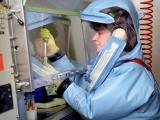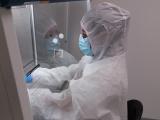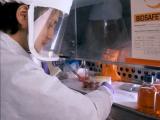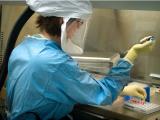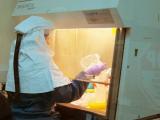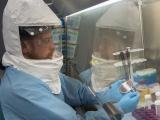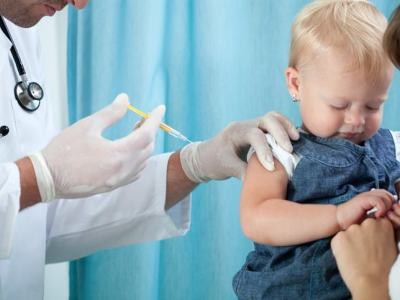Nov 15, 2010 (CIDRAP News) – A federal assessment of the proposed National Bio- and Agro-Defense Facility (NBAF), a biosafety-level (BSL) 4 lab to be built on the Kansas State University (KSU) campus in Manhattan, Kan., is incomplete and should be expanded and updated, the National Research Council (NRC) said in a report today.
The NRC's critique is aimed at a site-specific biosecurity and biosafety risk assessment that was just released by the US Department of Homeland Security (DHS). The Kansas site was selected over five others to replace the aging federal Plum Island Animal Disease Center, located 2 miles off Long Island, N.Y.
Congress has withheld funding of the facility pending completion of the DHS assessment and the NRC review of its validity and adequacy, the NRC said today in a press release. The NRC is an arm of the National Academies, an independent advisory group supported by federal agencies.
According to a federal timeline, construction of the facility is set to begin in March 2011, with the transition from Plum Island to NBAF to occur between 2016 and 2018.
Dr Ronald Atlas, chairman of the NRC committee that wrote the report, said in the statement the lab would operate on a larger scale and on larger animals than other high-containment facilities, which poses new and unknown risks that weren't addressed in the DHS risk assessment because of a lack of data and experience. "The risk assessment should be viewed as a starting point, and given more time, it could have progressed further," Atlas said. "As more information emerges, an updated analysis could be more appropriate."
He said the nation needs a facility like the proposed NBAF lab, but added that the NRC was not asked to judge whether the Kansas site is an appropriate setting for it. "Those questions are left to policymakers and future risk assessments," Atlas said.
The NRC report, which contains 11 findings, said the DHS risk assessment doesn't fully account for how a BSL-3 agriculture or BSL-4 pathogen facility would operate or how pathogens might be accidentally released. For example, the NRC said the assessment doesn’t discuss risks linked to the daily cleaning of large-animal rooms.
Much of the NRC's concern revolves around the possible release of foot-and-mouth disease (FMD), a highly contagious disease that affects hoofed animals and can spread to humans. The United States has not had an FMD outbreak since 1929, and research on the disease has not been conducted on the US mainland since 1937, the NRC said.
A key shortcoming of the DHS risk assessment is that doesn't address risks that would increase the chance of an FMD leak, which could spread to KSU's veterinary college, football stadium, or other facilities, the NRC said. It also points out that about 9.5% of all US cattle are within a 200-mile radius of the proposed lab.
The NRC panel said the risk assessment's estimates for potential FMD spread and resulting disease response and containment were "overly optimistic." The panel concluded that there is a 70% chance of an FMD release over the lab's 50-year lifespan that could result in a $9 billion to $50 billion economic cost.
The authors also said they were concerned about the lack of an early-release detection and response system, clinical isolation facilities, and access to top infectious-disease clinicians that could treat people exposed to pathogens.
The choice of the Manhattan, Kan., site has been controversial. In July 2009 the Government Accountability Office issued a draft report saying the analysis the DHS used in selecting the site was flawed. It said the DHS greatly underestimated the risk of an accidental release of a dangerous pathogen, given that the site is in a tornado-prone area.
In response to today's NRC report, the Kansas Bioscience Authority (KBA) in a statement commended the US government for extensive and thorough risk reviews. It said the DHS 417-page risk assessment, also released today, was completed by more than 130 subject-matter experts. Though the KBA said the DHS will benefit from the negative and positive elements in the NRC's report, the agency raised concerns about the NRC committee's methods.
The KBA said the NRC group ignored standard mitigation techniques that labs routinely use, adding, "This troubling approach is not only misleading and without precedent, it exaggerated risk to an extreme, nonsensical level that would call into question the entire American biocontainment research enterprise, including the Centers for Disease Control and Prevention."
The KBA worried that roadblocks posed by the assessment could stall the development of vaccines and disease interventions for decades. "The danger is not in modern research but, rather, in the lack of accelerated research to protect the food supply," the agency said.
See also:
Nov 15 National Academy of Sciences press release
Nov 15 National Academy of Sciences report
Jul 27, 2009, CIDRAP News Scan
DHS NBAF risk assessment
DHS NBAF background page


